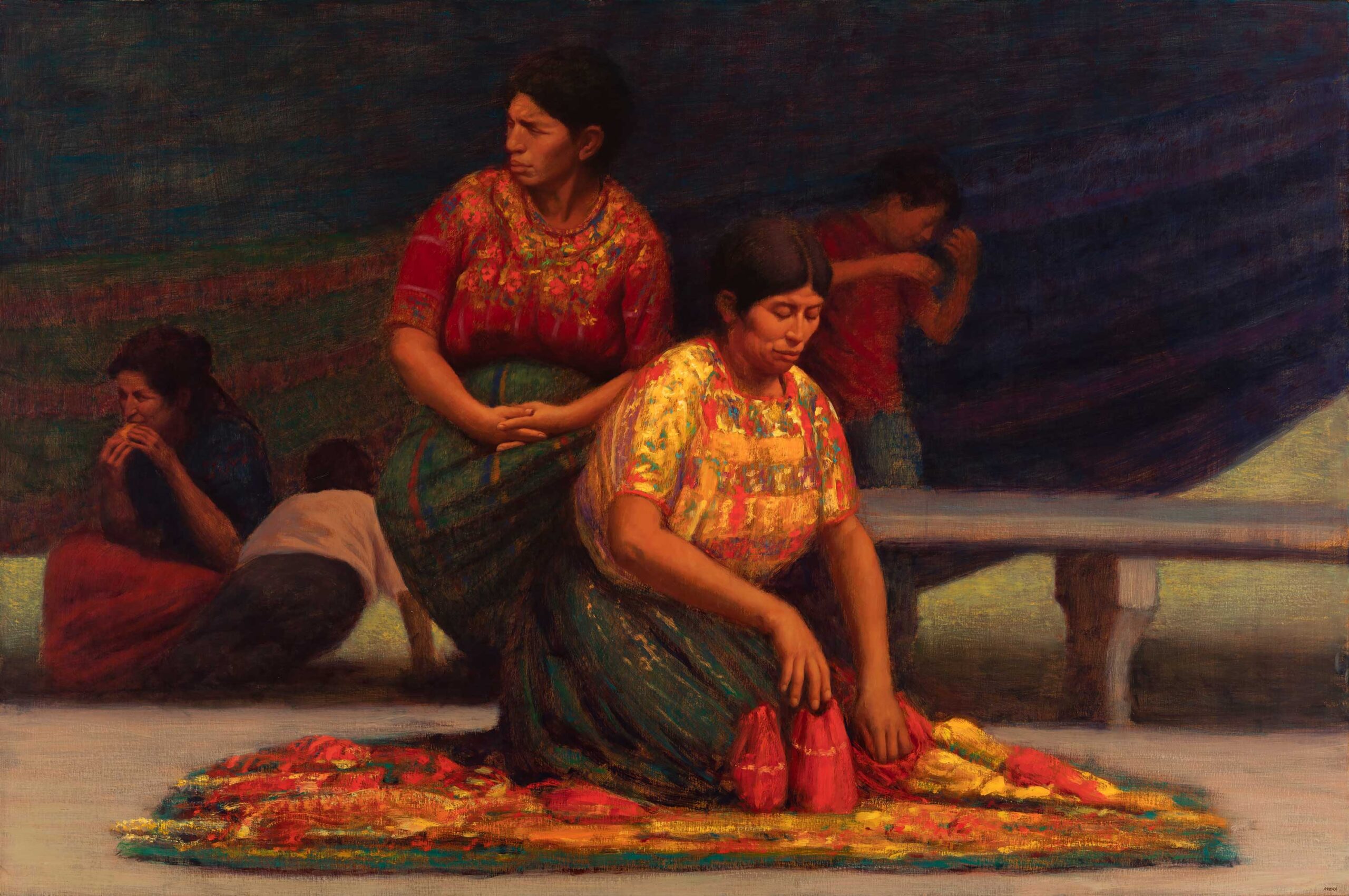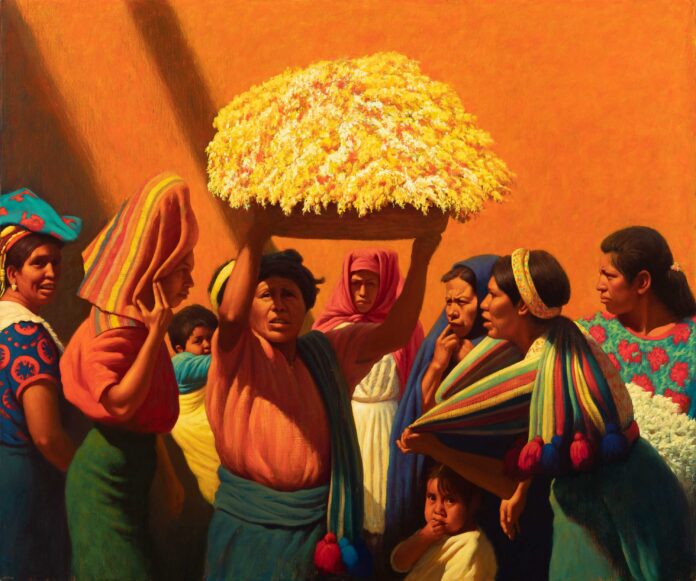Figurative Art On View > American figural painter Elias Rivera (1937 – 2019) is best known for his striking body of canvases widely acclaimed for their visual eloquence in sublimely distilling the life of Indigenous communities whose cultural traditions persist little changed despite exposure to the contemporary world.
These works are regarded for their intimacy, purity of vision, and ability to impart a majestic sense of intrinsic nobility and dignity of their human subjects. LewAllen Galleries is pleased to announce its first exhibition of Rivera’s work, “From the Thread of Time,” as the exclusive representative of his estate. The exhibition is on view through Tuesday, August 22, 2023, including during the Indian Market in Santa Fe. The opening reception will be held at the gallery on Friday, July 28, and attended by Elias’s wife, Susan Contreras. Marimbist Steve Chavez will offer a live performance at the event, held during the Railyard Arts District Last Friday Art Walk.

More from LewAllen Galleries on the figurative art painter Elias Rivera:
Rivera’s unique facility with bold and bright color, minimal composition, and a powerful, fresh focus on the primacy of the individuals portrayed, produces works that some critics have described as “frieze-like,” which allow viewers to sense the spirit of these subjects in his remarkable group portraiture that have been called cultural archetypes. Rivera’s work is renowned for its capacity to capture the colorful garments and ancestral rituals and markets as though frozen moments in time and to present the ordinary as extraordinary with a clarity of light and color.
“The magic of Rivera’s art is that it is simultaneously figurative and abstract, without having to compromise either aspect. From his beginnings as a social-realist painter, he has evolved almost to the opposite extreme, to become one who offers sensations that are focused on aesthetic experiences,” writes well-known international art critic Edward Lucie-Smith.
Rivera is noted for simplifying space and eliminating inessential forms in his paintings in order to emphasize the humanity of his subjects. The strong brushwork and luminosity of color in Rivera’s paintings communicate a dramatic sense of universal grace and majesty. His uncanny depiction of mundane details of a peasant’s life and resolute dedication to portraying the essence of his subjects with profound compassion create this drama that is both ennobling to his subjects and sublime for his viewers.

Rivera’s artistic sensibility has been distinguished from most contemporary artists and often likened to Renaissance and Old Master painters such as Vermeer, Rembrandt, Caravaggio, and Veronese. Part of this comparison results from Rivera’s use of an unusual painting medium, maroger, thought to have been used during the Renaissance, but largely lost until its rediscovery in the 1940s. Rivera employed it to produce the glowing and highly finished surface qualities distinctively associated with his works. Also like the Venetian masters, Titian and Tintoretto, Rivera was a genius of the colorito technique, using the juxtaposition of colors to define a composition rather than with lines.

Before coming to Santa Fe in 1982 and developing the body of lush works for which he became best known, Rivera, a New York native of Puerto Rican descent, spent his formative years in the Bronx growing up generally devoid of art. When he left home at 18, Rivera began studying at the Art Students League under Frank Mason, and at the School of Industrial Arts.
For years, he painted life on the streets of New York—people in bars, subways, airports, and automats—and developed a keen power of observation. The darker, monochromatic aspect of Rivera’s paintings during this period has a fascinating Dostoevskian quality but contrasts dramatically in mood, size, and content with the later panoramas of color and warmth focused on Indigenous people created after he moved to Santa Fe. Works from this period of Rivera’s career are also included in this exhibition.

The exhibition presents Rivera’s truly exceptional abilities as a painter—his Renaissance-like quality, his methods and techniques, and his superb eye. Rivera was inspired by life in New York and New Mexico, as well as his journeys through countries like Guatemala, Peru, and Bhutan, always working with a deep empathy for the human soul.
In 2004, Rivera received the prestigious New Mexico Governor’s Award for Excellence in the Arts. In 2005, he was named the Artist of the Year by the Santa Fe Rotary Foundation. A major monograph entitled Elias Rivera was published in 2006 with an essay by well-known art critic and writer Edward Lucie-Smith. Following a tragic accident in 2008, Rivera stopped working in 2011 and passed away in 2019 in Santa Fe.

View more figurative art exhibitions here at FineArtConnoisseur.com.








